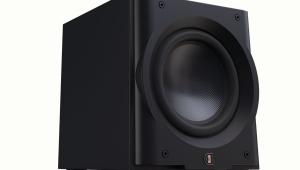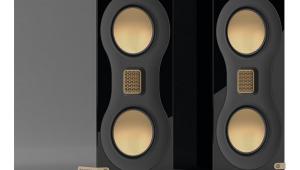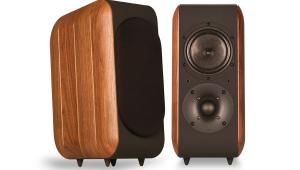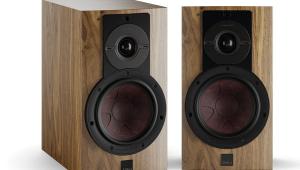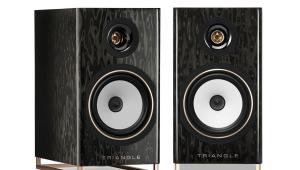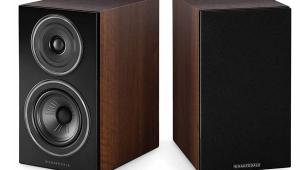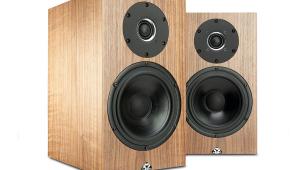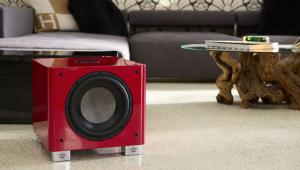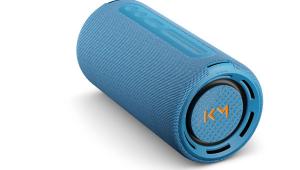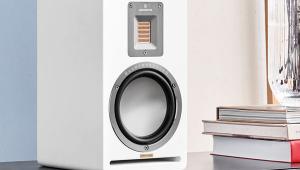Mission ZX-3
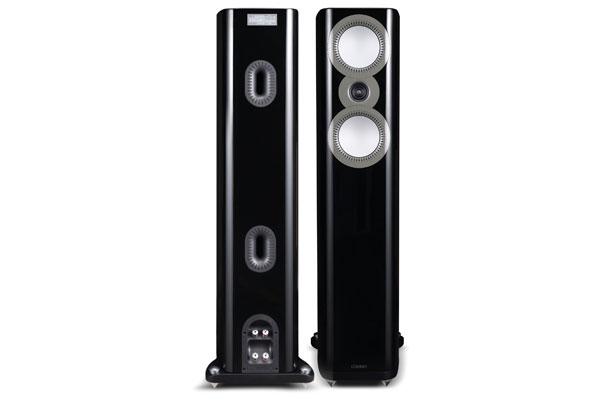
 Ever since Mission released its LX range of speakers a few years ago, the brand has been undergoing a resurgence. Now part of the International Audio Group, it took a little while for its products to establish a recognisable identity to separate it from sister brand Wharfedale, but with the ZX Series – which sits above the QX series as the new flagship of the Mission family – it’s certainly starting to get there.
Ever since Mission released its LX range of speakers a few years ago, the brand has been undergoing a resurgence. Now part of the International Audio Group, it took a little while for its products to establish a recognisable identity to separate it from sister brand Wharfedale, but with the ZX Series – which sits above the QX series as the new flagship of the Mission family – it’s certainly starting to get there.
The ZX-3 is the smallest of three floorstanders, although this is as much a reflection of its ZX-4 and 5 siblings being pretty hefty than any suggestion it is compact. A two-way design, it partners a single tweeter with a pair of 130mm mid/bass drivers. These are both technically of interest. The tweeter is the 38mm ring dome type that first appeared in the QX Series. It features a fixed dome in the centre with the voice coil mounted halfway down. This pulls the dome into two rings and allows for better control of the entire unit. Mission says that the tweeter is able to reproduce frequencies up to 30kHz and quotes a 24kHz upper frequency roll off for the entire range.
Mission calls the design of the mid/bass driver ‘DiaDrive’ and it effectively has two diaphragms. The first is on the front panel and is a continuous profile, aluminium cone that appears to extend to the cabinet edge as there is no visible surround. This is because the surround is inverted and sits under the lip of the driver edge.
Behind this is a secondary sub-cone to which the voice coil is attached. Mission says that dividing the two improves the overall efficiency and ensures a greater level of control. Around the outer edge of the driver is a series of vents designed to help regulate the flow around the driver.
The cabinets are fitted with braces that are intended to hold the driver magnets firmly in place, ensuring that the full force of their output is sent to the diaphragms and not lost as wasted energy. The cabinets are additionally lined with a specialist damping material that controls resonance and helps channel the flow of air to the two rear ports. These are rectangular in shape and have a serrated edge to help the flow of air and ensure that noise levels are kept to a minimum. Each cabinet also has an integrated plinth with good quality spikes pre-fitted.
Mission has completely eschewed any retro element to the design meaning that the ZX-3 feels utterly up to date. The styling is clean, modern and helps to conceal some of the mass of the cabinet; something that is a perk here but, I imagine, even handier with its larger siblings.
Then there’s the fact that, despite being entirely modern, this is still recognisably a Mission. The woofer, tweeter, woofer arrangement and the general proportions hint at classic products of old without shamelessly aping them and I like the results. I’m not completely convinced by the white finish, but the black of the review sample looks fantastic. Build quality is also superb, even judged at the standards of the price point.
Sound quality
My sample arrives with zero hours on it and takes about four more to ‘loosen up’. Once that phase passes, the virtues of the ZX-3 start to make themselves much more apparent. Connected to a Naim Nait XS 3 (HFC 459) and Chord Qutest (HFC 436), the floorstander manages to impress across a wide selection of material. Listening to Poppy Ackroyd’s magnificent modern classical work Resolve highlights that it has an excellent grasp of tonal realism. These stripped-back pieces centre around the piano with only sparse supporting instrumentation, so if the piano doesn’t sound right, everything else falls by the wayside. The ZX-3 does a fine job of ensuring that it’s not only entirely convincing, but also sounds rich and weighty.
It’s the effective reproduction of scale that’s the Mission’s most impressive attribute. The piano has the perceived mass to sound like a believable object, but this is achieved without the supporting strings in Quail coming across as oversized or unduly prominent. With the larger and more crowded soundscape of Dead Can Dance’s Children Of The Sun, it keeps everything sounding in-keeping with the intended scale. This is helped in no small part by this being a commendably easy speaker to drive. The 70W of the Naim is entirely sufficient to hit the sort of volumes at the limits of domestic acceptance and the Mission retains a consistent sense of proportion throughout.
This is assisted by a similarly convincing soundstage. Provided that a modicum of care is taken in the cabinet’s positioning – I find that 2m apart with toe-in equivalent to a crossover point a metre or so behind my head works best – the Mission creates a space that music is allowed to happen in. There is an order and coherence to how it handles even very large-scale material that makes listening for extended periods extremely easy. Some of this also comes down to a top end that – once that initial run-in has been completed – is extremely hard to provoke.
With very high-quality recordings, it lacks a little top-end sparkle. For instance, the unplugged version of Can’t Hold Me by Emily King on her Sides album is sweet, rich and effortlessly refined, but some of the fine detail that I know to be present in the recording isn’t as perceivable here. On the other hand, the positive side effect of this slight reticence is that this is a speaker that can keep some fairly grim recordings sounding listenable.
I also have some slight reservations over the bass response. The crossover between the tweeter and two mid/bass drivers is seamless and completely tonally consistent, but for a fairly big speaker being driven by electronics that I know to be capable of a very commendable level of bass extension, the ZX-3 never feels quite as potent as perhaps it should.
That said, the bass extension it does have is detailed and commendably quick and, given the choice between a floorstander with a little bit less bass that keeps up with the music or one that has great lumps of the stuff half a beat after it’s needed, I’ll always choose the former.
When faced with the wonderfully overblown marathon of Welcome To The Pleasuredome by Frankie Goes To Hollywood, the ZX-3 wades in with genuine enthusiasm, managing to provoke a response that is as much emotional as cerebral.
Comparing it with Mission speakers of old, I’d say that while it doesn’t feel quite as fast and energetic as some of its predecessors, it certainly knows a thing or two about tonality, soundstage and sheer realism. These are valuable developments and it’s a sure sign of the brand’s new-found maturity that the ballistic edge of past offerings has been reined in a little.
Conclusion
In the more affordable LX and QX ranges that preceded the ZX series, Mission managed the impressive achievement of setting a new benchmark of what customers could reasonably expect for their financial outlay. While perhaps not continuing the trend, at this keenly contested price point the ZX remains an exceptionally capable, well made and handsome loudspeaker. ES
DETAILS
Product: Mission ZX-3
Type: 2-way floorstanding loudspeaker
FEATURES
● 38mm ring dome tweeter)
● 2x 130mm ‘DiaDrive’ aluminium mid/bass drivers
● Quoted sensitivity: 90dB/1W/1m (8ohm)
 |
Inside this month's issue:
Ruark R610 music system and Sabre-R standmount speakers, PMC twenty.23i Active, floorstanders, English Acoustics Downton preamplifier, Bluesound NODE ICON preamp/streamer, Ortofon Concorde Music Blue MM cartridge and much, much more
|
